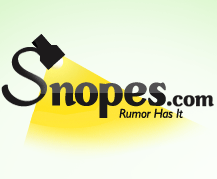The Martian mummy hoax in 1864:
The story began in the 17 June 1864 issue of Le Pays, Journal de l’Empire, one of the most important French newspapers at the time of Emperor Napoléon III, as a letter sent by an unnamed correspondent to a French journalist; its title was “Un habitant de la planète Mars” [“An Inhabitant of the Planet Mars”]. Other letters were then published twice a month in that paper until 06 January 1865. And a book with the same title, by author Henri de Parville, was soon published in Paris, probably in April or May 1865, by Hetzel, who was from 1863 the publisher of Jules Verne; it had apparently both a hardback and a softcover edition. De Parville, whose full name was François Henri Peudefer de Parville (1838-1909), was a popular science writer, a contributor to some newspapers, an author (for instance, in 1883 he wrote a book about electricity and its applications), and a manager of a popular science magazine. He had apparently some importance, for a prize of the Académie des Sciences bears his name.
Besides a preface and a postscript by de Parville (hereafter P), which will be considered later, the book consists of the 14 letters sent to him by the unnamed journalist from Richmond (hereafter N = narrator); they bear no date, except for the last one, dated 27 September [1864] , which is the only one which did not appear in Le Pays.The [alleged…] events take place in the “Arrapahys country, several miles from James Peak”; no other precise location is given, but the given route locates them probably somewhere in Colorado. (A quick Google search gives indeed the James Peak in the Arapaho National Forest, at some 60 km WNW of Denver.) Workers of (or for) the wealthy landowner Mr. Paxton are searching for oil in his estate. One day, they discover in a Paleozoic terrain a strange egg-shaped rock which measures some 45 yards [35 m] and the surface of which seems enameled. Mr. Davis, a geologist from Pittsburgh, begins its study. News of the discovery spreads, and interested people are arriving on the spot, despite its isolation and the war [the American Civil War, of course].
A scientific committee decides to dig a hole in the rock, in which they find a cavity, from which is extracted a white metallic jar bearing curious drawings, then several other such containers. Next a grave is discovered behind a metal plate. It contains the calcified mummy of a strange being:
some parts seemed carbonized and the short legs were damaged during the extraction, the head was intact, no hair, instead a smooth, coriaceous skin, a triangular-shaped brain,..[]…instead of a nose a short trunk, a small mouth with some teeth, two orbital cavities with the eyeballs removed in the past, as limestone had formed in there…
There are also some objects, particularly metal rods. The plate bears several drawings: ‘rhinoceros’, ‘palm tree’, “very successful representation of a star similar to the Sun as drawn by children”, other ‘stars’ which are identified as the planets and the biggest of which shows evidently the Martian origin of the being. Money is collected so that the work can be continued, with several meetings of the scientific committee on the site. It consists of specialists from various disciplines and is chaired by the geologist Newbold, and has some journalists as guests, including N. During the first meeting, a vote by the committee decides that the creature is an extraterrestrial.
In order that the whole world shares proofs of the event, Paxton decides to offer the engraved plate to the Royal Society in London and the mummy to the Institut de France in Paris, while the United States keeps the egg-shaped rock and the various artifacts. And N is assigned the mission to bring the mummy to France, he writes in his last letter to his friend P.
However, nothing comes during the following months. Here we must go
back briefly to the preface, where P had written that he had received the letters very mysteriously twice a month: early on the morning, opened on his desk. And we jump again to the postscript: six months later, another letter comes from Richmond, in which N wonders for not having received news from France, and this letter is signed… Henri de Parville! P wonders if de Parville had been his own correspondent, writing by night in some altered state. Last clue: his postscript is dated… 1 April 1865 (April Fool’s Day).
An identical story was published in La Capital, a Rosario, Argentina newspaper on 13 October 1877. This time the discovery, again attributed to Paxton and Davis, occurred near the Carcarana River, near whose banks the egg-shaped object lay half-buried. The body and related artifacts were put on display in a local tavern and later lost.
Many nineteenth-century newspapers routinely published outrageous yarns, often set in some distant place inaccessible to a skeptical reader who might seek verification.
The French “mummified Martian” hoax might have inspired the “Cardiff Giant,” the 10-foot statue planted and uncovered in 1868-1869 in an upstate New York farm as an alleged petrified ancient giant man. The “Cardiff Giant” was the creation of New York tobacconist and outspoken atheist George Hull. He decided to create the giant after an argument with a fundamentalist minister about the passage in Genesis 6:4 that there were giants who once lived on Earth.
References:
- Jerome Clark. Unexplained!: Strange Sightings, Incredible Occurrences and Puzzling Physical Phenomena, 3rd Edition (Canton, MI: Visible Ink Press, 2012).
- Henri de Parville. Un habitant de la planète Mars (Paris, France: J. Hetzel, 1865).




























You must be logged in to post a comment.